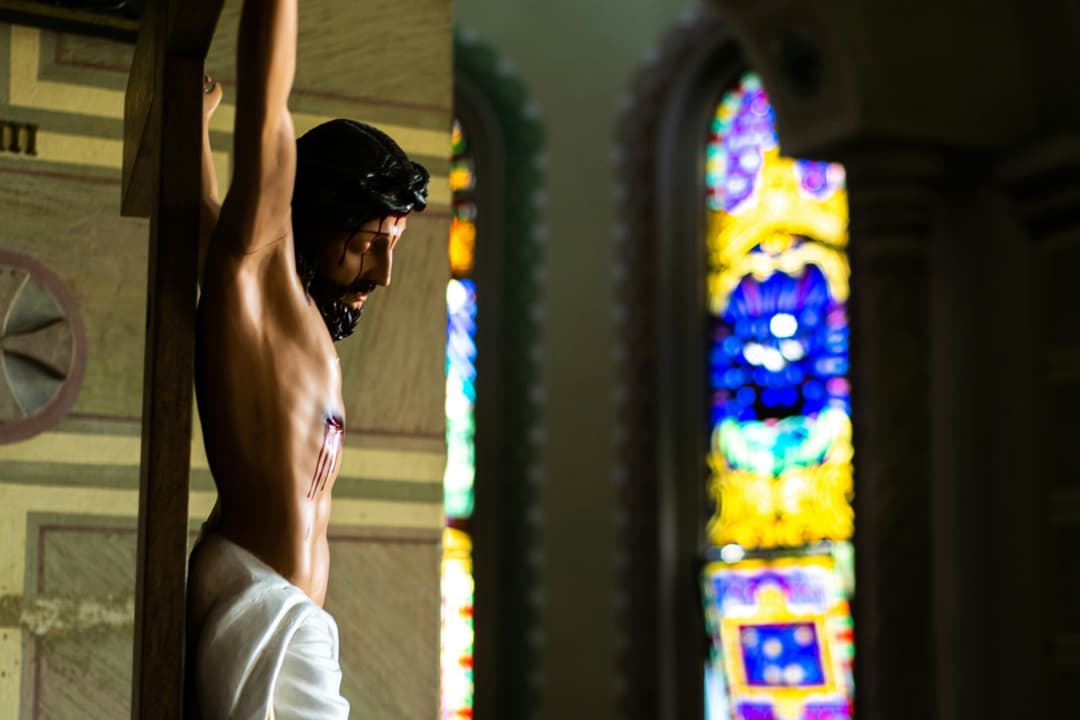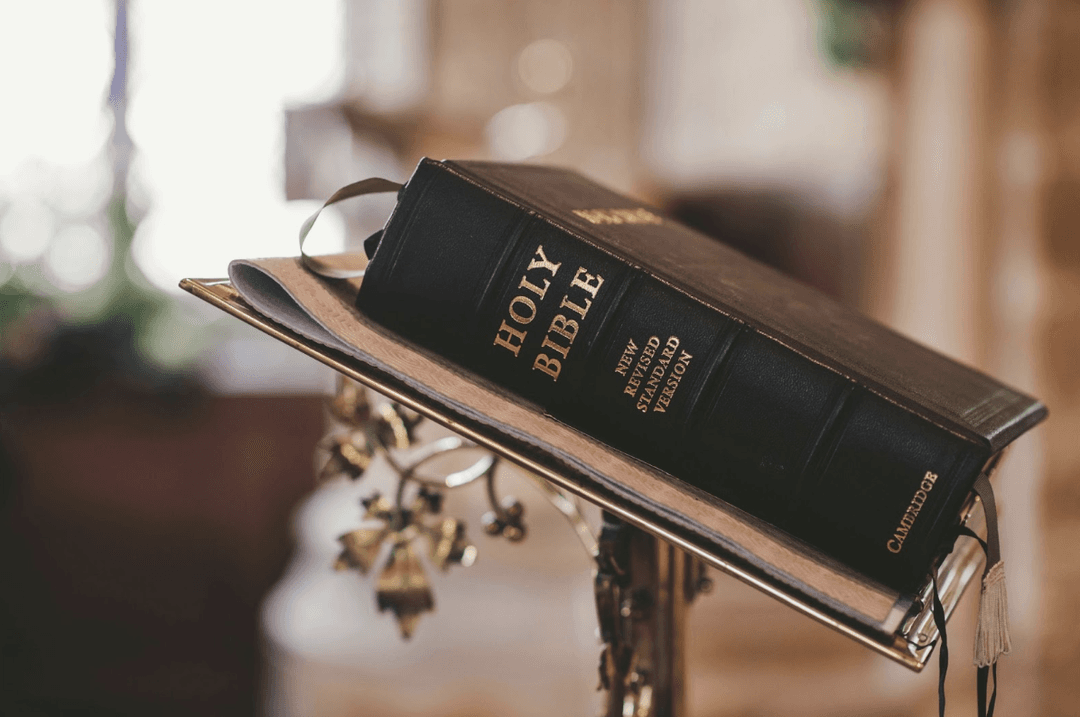What is Demonology?
The Cambridge History of Christianity, by Wolfgang Behringer, gives ample insight into demonology, the study of demons and their activities. In its original Greek form, "daimon" only denotes a lesser deity or supernatural being. "Daimones" were considered either benevolent or malevolent spirits that attempted to influence humans' minds in classical ancient Greece.
But demons were always seen as wicked in Christian theology, whereas angels were seen as agents or messengers of God. An intricate examination technique called the discernment of spirits (discretio spirituum) was thought to be required because of the wicked spirits' reputation for being masters of deceit.
The result was the development of angelology, a branch of study that is separate from demonology. From a theological perspective, demonology drew heavily from the New Testament and ancient Jewish tradition.
Almost everyone believed in specters and related occurrences like inspiration, possession by spirits, and the use of exorcism to drive them out of their homes. Contact with the afterlife or supernatural aids was central to many ancient religious practices, including shamanic.
The significance of inspiration in Christianity was and remains highlighted by the feast of Pentecost. Many types of spiritualism and prophecy persisted in European society, much to the chagrin of the ruling elite, and indigenous prophets kept popping up across the continent.
The medieval idea of demonology was mostly unaltered from the fifteenth century until the sixteenth century. It was influenced by St. Augustine's (354–430) belief that demon-human contacts were predicated on an implicit or explicit contract. This presumption originated with Roman law, which recognized contracts as legally enforceable agreements between two parties.
4 Types of Demons
 Joseph Glanvill, Saducismus triumphatus, (London, 1700) frontispiece detail
Joseph Glanvill, Saducismus triumphatus, (London, 1700) frontispiece detail
Numerous passages in the Bible attest to the reality of demons.
According to the Bible, Satan's fallen angels are called demons. Other heavenly entities (demons) were cast out of heaven together with Satan when he fell (Ezekiel 28:18; Matthew 25:41; Revelation 12:4).
Many times throughout His mission and teachings, Jesus Christ dealt with demonic possession and the demons that possessed people (Matthew 12:22–29, 15:22–28, 25:41; Mark 5:1–16). Christ not only cast out demons, but He also gave His followers the power to do the same (Matthew 10:1).
There are 4 theorized origins of demons, some more credible than others:
1. Fallen Angels
Demons, according to the majority of conservative academics, are fallen angels in the Bible. According to Matthew 25:41, Jesus used the phrase "eternal fire prepared for the devil and his angels" to depict the hereafter. John used very symbolic language to explain Satan's fall, pointing out that he took one-third of the angels in heaven with him.
There are some who draw the conclusion that Satan, together with Gabriel and Michael, was one of the three angels responsible for overseeing the angelic realm. It is possible that one-third of the angels under Satan's command rebelled against God when he fell.
2. Spirits of the Dead
Demons, according to one modern theory, are the spectres of the wicked dead. A large body of popular occult literature rests on this premise. Several ancient Greek philosophers laid out the concept long before Christ came along. Having said that, the theory's old age does not lend credence to it. The teachings of the Bible are in stark contrast with this.
"Hades" is the destination of the wicked dead, according to the Bible (Luke 16:23). They won't leave until the millennial kingdom of Christ ends, when God will judge them (Rev. 20:11). After that, they are condemned to hell.
3. Pre-Adamic Spirits
A possible explanation, known as the "gap theory," assumes that the Earth is millions of years old. This idea holds that the planet and society God created in the beginning of the Bible were perfect, but that God had to destroy them before the predicament described in Genesis 1:2 could be resolved. Modern understandings of the world's age are brought into harmony with the biblical account of creation by this idea, which permits a civilization to have existed for millions of years.
Some people believe that the demons are actually the souls of the people who lived before Adam who are still roaming the planet. If we want to believe that demons are the souls of a species that existed before Adam and Eve, we'll need to find evidence of their existence. The majority of scriptural evidence, to reiterate, contradicts this view.
4. Children of Angels
Since the term "sons of God" is used to denote angels elsewhere in the Old Testament, some argue that Genesis 6:4 depicts sexual intercourse between angels and women. The likelihood of such a coupling giving birth to demons is very low, even if this reading is accurate.
The 'giants,' according to others, could represent the men's political or military power. Some people think it might mean something about how a pre-Flood society's genetics were altered. However, the biblical record does not establish that demonic beings were born from the mating of humans and angels.
Note: It's important to remember that even when learning about dark spiritual realities like demons, our focus should not be on fear but on faith. The Bible does not call us to obsess over evil but to be vigilant and grounded in truth. Scripture offers clear teaching on how to overcome fear, not through superstition or avoidance, but through trust in God's power, the authority of Christ, and the presence of the Holy Spirit (2 Timothy 1:7, James 4:7). While demonology reveals the enemy's strategies, God’s Word equips us with everything we need to stand firm.
A List of Demons According to the Bible
The Bible mentions several demon names, though not all of them are directly called "demons" in the text. Here are a few prominent ones:
- Satan - Often referred to as the adversary or the accuser, Satan is the most well-known demon in the Bible, appearing in both the Old and New Testaments (e.g., Job 1:6-12, Matthew 4:1-11).
- Beelzebub - Referred to as the prince of demons in the New Testament (e.g., Matthew 12:24, Mark 3:22). The name is often considered a corruption of "Baal-Zebul," an ancient Philistine god.
- Lucifer - Mentioned in Isaiah 14:12-15, the name "Lucifer" is derived from a Latin translation meaning "light-bringer"; biblically accurate Lucifer is a fallen angel who becomes Satan.
- Abaddon/Apollyon - Mentioned in Revelation 9:11 as the king of the bottomless pit. Abaddon is Hebrew for "destruction," and Apollyon is Greek for "destroyer."
- Legion - In Mark 5:9 and Luke 8:30, Jesus encounters a man possessed by many demons who collectively identify themselves as "Legion."
These reflect a combination of fallen angel names, destructive spirits, and personifications of evil. The biblical texts often provide a complex picture of demonic forces as both personal entities and broader symbolic representations of evil and opposition to God.
What Does The Devil Look Like?
 Satan is trapped in the frozen central zone in the Ninth Circle of Hell, Inferno, Canto 34. Illustration by Gustave Doré.
Satan is trapped in the frozen central zone in the Ninth Circle of Hell, Inferno, Canto 34. Illustration by Gustave Doré.
Throughout history, the depiction of Satan, often associated with evil spirits, has evolved significantly. To answer the question "what does Satan look like," All About History magazine consulted experts Marina Montesano and Jan Machielsen.
- Ancient Hebrew: The Serpent — In Genesis, Satan is commonly linked to the serpent that tempts Adam and Eve, although the Hebrew Bible uses "Satàn" to mean "adversary" or "enemy," not explicitly naming the serpent as Satan. In the New Testament, Satan is clearly associated with the serpent.
- Early Medieval: The Fallen Angel — Isaiah 14:12 references Lucifer's fall from heaven, interpreted by early church fathers as Satan’s rebellion. A sixth-century mosaic in Italy depicts Satan as an ethereal blue angel, a far cry from his later, more demonic representations.
- Late Medieval: Satan as the Beast — Medieval art often depicted Satan as a dragon or beast, incorporating animalistic features like cloven hooves, tails, and talons, exemplified by illustrations in the "Smithfield Decretals."
- Dante’s Inferno: The Winged Devil — Dante’s "Inferno" presents Satan with bat-like wings, a blend of Christian lore and Babylonian myths, reflecting the figure of Lilith.
- Satan with Horns — Artistic links between Satan and goats emerged from medieval mosaics and folklore, with debates on whether this imagery stems from Nordic myths, the god Pan, or modern neo-paganism.
- Paradise Lost: The Devil as an Adonis — John Milton’s "Paradise Lost" portrays Satan as a charismatic military leader. This vision influenced 18th and 19th-century artists like William Blake, who depicted Satan as a handsome, god-like figure.
- A Devil Dressed in Red — In the 19th and early 20th centuries, Satan was popularized in red tights and horns, a look derived from theater productions like Gounod's "Faust."
- The 20th Century Devil — Modern depictions of Satan varied widely, from mysterious strangers to businessmen and even children, as seen in "The Omen" and "The Devil’s Advocate," reflecting a mix of legal and diabolical influences.
Get Closer to God Today
4.9
Average Rating
|Over 5 Million Downloads
Biblically Accurate Satan vs Demon
Understanding the difference between Satan and demons from a biblical perspective requires examining how each is described in scripture and early Jewish-Christian thought. While both are often associated with evil or opposition to God, they are not synonymous and serve distinct roles in the biblical narrative.
1. Satan: The Adversary and Accuser
- The word Satan (Hebrew: śāṭān, שָּׂטָן) means “adversary” or “accuser.” In the Old Testament, especially in Job 1–2 and Zechariah 3, Satan is portrayed as part of God's divine court. He functions like a prosecutor, testing human faithfulness, not as a rebellious enemy of God (Job 1:6–12).
- In the New Testament, Satan becomes more clearly a personal being in opposition to God. He is described as: The tempter (Matthew 4:1–11), The father of lies (John 8:44), The god of this world who blinds unbelievers (2 Corinthians 4:4), and The accuser of the brethren (Revelation 12:10)
2. Demons: Unclean Spirits, Fallen Angels?
- While Satan is a singular, personal entity, demons are plural and function more like agents of corruption, usually possessing or afflicting humans.
- Satan is not called a demon in scripture, nor do demons act with Satan in a unified army until later Christian theology (especially post-2nd century).
What do Angels Look Like?
Beautiful winged female beings or cherubim, who resemble infants and have halos and harps, are common representations of angels in popular culture. The majority of us are blissfully unaware that the biblical angels probably don't resemble anything we've ever imagined or seen in the media.
Then, how exactly do angels appear? How are angels described in the Bible?
How they manifest is crucial to determining the correct response to this question. As spiritual creatures, angels have the ability to assume various shapes and sizes. According to the Bible, angels can take human forms; in fact, it is possible that we may serve an angel and not even realize it (Hebrews 13:2).
On other occasions, we come across extremely strange passages, such as those of Ezekiel's biblical angels; in Ezekiel 1, a prophet tries to paint a picture of angels using a succession of pictures, one of which is wheels adorned with eyeballs.
The simple answer is that we don't know what angels look like, but we can see examples of their appearance in the Bible.
"The donkey saw the angel of the LORD standing in the road, with a drawn sword in his hand. Thus the donkey turned off the road, and went into the field and Balaam struck the donkey, to turn it back onto the road (Numbers 22:23)."
It is clear from this verse that Balaam failed to perceive the angel. We may not always be able to see angels. We are often frightened by them whenever we do see them.
It is worth mentioning that angels engage in spiritual warfare, and this is not the only time we encounter armed angels in Scripture. Consider several passages in the Bible that describe angels with swords.
"After he drove the man out, he placed on the east side of the Garden of Eden cherubim and a flaming sword flashing back and forth to guard the way to the tree of life (Genesis 3:24)."
"I lifted up my eyes and looked, and behold, a man clothed in linen, with a belt of fine gold from Uphaz around his waist. His body was like beryl, his face like the appearance of lightning, his eyes like flaming torches, his arms and legs like the gleam of burnished bronze, and the sound of his words like the sound of a multitude (Daniel 10:5-6)."
If these words do allude to a heavenly being, it is evident that the entity has a spectacular appearance in its actual form, even if the last six chapters of Daniel are known to elicit conjecture and heated argument among theological scholars.
4 Types of Angels
According to most interpretations, there are four types of bible accurate angels:
1. Cherubim
 Symbolizing their position as keepers of holy places and heavenly secrets, the cherubim are first introduced to us in Genesis as being stationed in the east of the Garden of Eden to guard the path to the Tree of Life with a flaming sword (Genesis 3:24). The book of Exodus describes winged beings called cherubim (plural: cherub).
Symbolizing their position as keepers of holy places and heavenly secrets, the cherubim are first introduced to us in Genesis as being stationed in the east of the Garden of Eden to guard the path to the Tree of Life with a flaming sword (Genesis 3:24). The book of Exodus describes winged beings called cherubim (plural: cherub).
"The Hebrew word keruv ("cherub") (can be compared) to the Aramaic expression ke revaya meaning "like a child" (according to a statement of Rabbi Abahu in Sukkah 5b)," reads an article from My Jewish Learning. The common practice of portraying cherubim as "baby" angels is based on this belief.
When it comes to what angels really look like, cherubim are frequently shown with many wings and faces, each one representing a distinct part of creation. For instance, in Ezekiel's vision, the cherubim represent the universal nature and interconnectedness of all living things with their four wings and four faces, which include a human, a lion, an ox, and an eagle.
2. Seraphim
 Seraphim surround the divine throne in this illustration from the Petites Heures de Jean de Berry, a 14th-century illuminated manuscript, commissioned by John, Duke of Berry.
Seraphim surround the divine throne in this illustration from the Petites Heures de Jean de Berry, a 14th-century illuminated manuscript, commissioned by John, Duke of Berry.
Seraphs and Seraphim are another category of angels. You can read about these particular angels in Isaiah 6.
“Seraphs stood over him; each one had six wings. With two wings they covered their faces, with two they covered their feet, and they used the remaining two to fly.”
The seraphim's principal function, according to Isaiah's vision, is to continually praise and glorify God. They chant, "Holy, holy, holy is the Lord of hosts; the whole earth is full of his glory." A central theme of this song is God's holiness and absolute presence.
Moreover, one of the seraphim removes a lump of burning coal from the altar and places it on Isaiah's lips as a symbol of a cleaning ritual, preparing him for his prophetic mission and ridding him of his sins. This deed emphasizes the seraphim's function as a mediator between the holy God and fallen humans, bridging the gap between the two extremes.
3. Archangels
Among the many angelic groups mentioned in the Bible, the archangels stand out for the important responsibilities they play. Among their many holy duties is the delivery of vital messages from God to humanity.
The Bible uses the word "archangel" twice: once in 1 Thessalonians 4:16 and again in Jude 9.
4. Guardian Angels
 The concept of guardian angels, while popular in Christian tradition, is not explicitly detailed in the biblical description of angels. However, several verses suggest that angels do protect and minister to people. Here are some key biblical references that are often associated with the idea of guardian angels:
The concept of guardian angels, while popular in Christian tradition, is not explicitly detailed in the biblical description of angels. However, several verses suggest that angels do protect and minister to people. Here are some key biblical references that are often associated with the idea of guardian angels:
- Psalm 91:11-12: "For he will command his angels concerning you to guard you in all your ways; they will lift you up in their hands, so that you will not strike your foot against a stone."
- Matthew 18:10: "See that you do not despise one of these little ones. For I tell you that their angels in heaven always see the face of my Father in heaven."
- Hebrews 1:14: "Are not all angels ministering spirits sent to serve those who will inherit salvation?"
- Acts 12:5-11: This passage recounts the story of Peter being freed from prison by an angel. After being miraculously freed, Peter says, "Now I know without a doubt that the Lord has sent his angel and rescued me from Herod's clutches and from everything the Jewish people were hoping would happen."
- Psalm 34:7: "The angel of the Lord encamps around those who fear him, and he delivers them."
While the Bible does not specifically use the term "guardian angel," these verses collectively contribute to the belief that angels are sent by God to watch over and protect His people.
Conclusion
The portrayal of angels and demons in media and art has shaped certain expectations in us of what these spiritual creatures look like. However, by reading the Scripture, we uncover that many of those portrayals were far from the truth. This article sheds some light on whom the biblically accurate angels and demons are.











